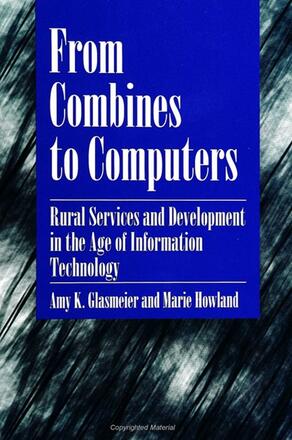
From Combines to Computers
Rural Services and Development in the Age of Information Technology
Alternative formats available from:
Description
Through an analysis of national data and detailed case studies, From Combines to Computers examines how the transition to a service economy is playing out for rural America. It answers two important questions: Will services fill the gap left by lost farming, manufacturing, and mining jobs? And will services stabilize, even revitalize, rural areas? Glasmeier and Howland document the intraregional spatial patterns and trends of services in the national economy, compare services in urban and rural communities, and identify the potential and limitations of rural development strategies based on services. In particular, they document the growing dominance of branch plants, the displacement of "mom-and-pop" enterprises, and the declining access to services for residents in the least populated rural areas. The authors conclude that services are unlikely to be the basis of widespread sustainable development unless policies are designed to help firms and communities compete successfully in an increasingly global and information-based economy
Amy K. Glasmeier is Associate Professor of Geography and Regional Planning at The Pennsylvania State University. Marie Howland is Director and Associate Professor of the Urban Studies and Planning Program at the University of Maryland.
Reviews
"This book targets an important but little understood element of the rural economy and systematically debunks some prevalent myths about changes that are occurring in rural America. While doing this, the authors clearly articulate key theoretical issues about rural socioeconomic change and convincingly ground their conclusions with their empirical analyses." — Forrest A. Deseran, Colorado State University
"This is the first large-scale, systematic treatment of service industries in rural areas. It is an original and genuine contribution to the literature on rural industrial development." — Charles M. Tolbert, Louisiana State University